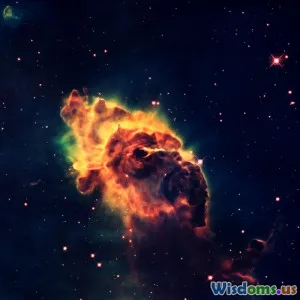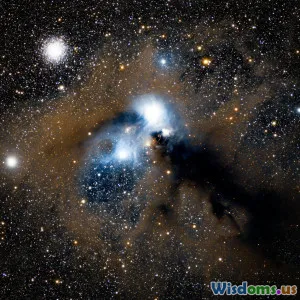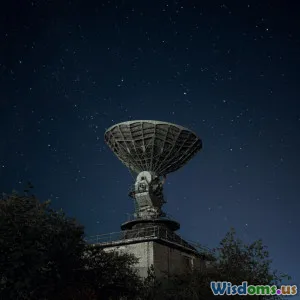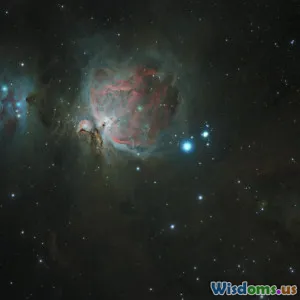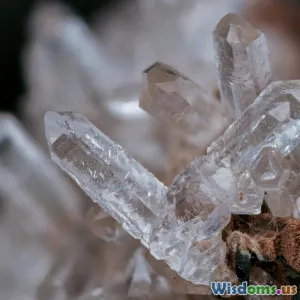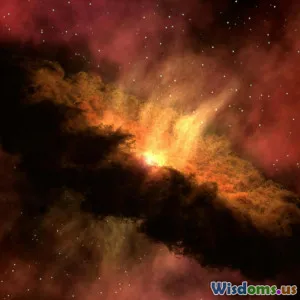
Why Do Some Galaxies Stop Making Stars Sooner Than Others
8 min read Explore why some galaxies cease star formation early, unraveling cosmic events shaping their life cycles. (0 Reviews)
Why Do Some Galaxies Stop Making Stars Sooner Than Others?
Introduction
The night sky dazzles us with countless points of light, each a testament to the cosmic processes that birth stars and shape galaxies. Yet not all galaxies share the same starry vitality. Some galaxies, paradoxically, ceasing their star formation remarkably early, remain quiescent realms of aging stellar populations. Have you ever wondered why some galaxies stop making stars much sooner than others? What cosmic forces govern these contrasting destinies?
Understanding why galaxies enter these dormant phases sheds light on galaxy evolution, the universe’s history, and even enlightens how stellar nurseries are influenced by both internal properties and large-scale cosmic environments. In this article, we embark on an exploration of the mechanisms and conditions that cause some galaxies to extinguish their star-making prowess early in the cosmic timeline.
The Lifecycle of a Galaxy: Star Formation Fundamentals
Star formation requires cold molecular gas to collapse under gravity, triggering nuclear fusion that lights up new stars. Most galaxies start rich in this raw material, glowing profusely with youthful, blue stars indicative of active star formation.
What Drives Star Formation?
- Availability of Cold Gas: Molecular gas clouds (mainly hydrogen molecules) serve as the stellar fuel.
- Stability and Density of Gas: If the gas is dense enough, gravity can overcome pressure to induce collapse.
- Trigger Mechanisms: Events such as galaxy collisions or stellar feedback can compress gas, accelerating star births.
Given suitable conditions, galaxies can continue forming stars for billions of years. However, not all galaxies follow this enduring timeline.
Why Some Galaxies Stop Forming Stars Early
1. Gas Depletion: Running Out of Fuel
A galaxy naturally ends star formation if it exhausts its supply of cold gas. Gas can be depleted by:
- Intense Early Starbursts: Massive star formation rates quickly consume available gas.
- Lack of Gas Accretion: Galaxies depend on the inflow of fresh intergalactic gas. Some lose access due to environment or internal dynamics.
For example, elliptical galaxies like M87 in the Virgo Cluster often have very little cold gas, showing rates of star formation near zero.
2. Feedback From Active Galactic Nuclei (AGN)
At the heart of many galaxies lies a supermassive black hole. When material falls into it, powerful energy and particle winds are released, known as AGN feedback. This feedback can:
- Heat the Surrounding Gas: Preventing it from cooling and collapsing into stars.
- Expel Gas From the Galaxy: Physically removing star-forming material.
Observations reveal that AGN feedback is a crucial quenching factor particularly in massive galaxies. For example, the quenching of star formation in massive galaxies often correlates strongly with AGN activity.
3. Environmental Effects: The Role of Cosmic Neighborhoods
Galaxies are rarely isolated. Dense environments like galaxy clusters impact star formation dramatically through processes such as:
- Ram-Pressure Stripping: High-speed movement through hot intracluster gas strips cold gas from the galaxy.
- Galaxy Harassment: Repeated fast encounters disturb gas and stars, hampering star formation.
The spiral galaxy NGC 4402 shows clear signs of ram-pressure stripping as it plunges through the Virgo Cluster, losing its star-forming fuel and gradually shutting down star production.
4. Morphological Quenching
Some galaxies transform structurally, developing massive bulges or stabilizing disks that inhibit gas fragmentation.
This internal change can prevent gas from collapsing into denser clumps necessary for star formation. Unlike gas depletion, here gas remains but remains stable and inert.
Simulations and observations suggest that the morphological transformation, likely linked to mergers or internal dynamics, is a subtle yet effective quenching mechanism.
Concrete Examples of Early Star Formation Shutdown
- Elliptical vs. Spiral Galaxies: Ellipticals generally stopped forming stars earlier than spirals. The massive elliptical galaxy M87 (Virgo A) ceased star formation billions of years ago, controlled in large part by AGN feedback.
- Compact, Massive Galaxies at High Redshift: Observations via Hubble Space Telescope reveal populations of massive galaxies 10+ billion light-years away that appear "red and dead," meaning they stopped forming stars early despite their great size.
What the Latest Research Says
Astronomers continue unraveling the puzzle with advanced simulations and powerful observatories such as ALMA (Atacama Large Millimeter/submillimeter Array). Recently, studies revealed:
- Gas inflows onto galaxies from intergalactic filaments can sustain star formation, but their disruption leads to quenching.
- The precise timing of AGN feedback determines if star formation rapidly halts or fades gradually.
According to Dr. Jane Rigby from NASA’s Goddard Space Flight Center, “Understanding why star formation stops isn’t just about looking at the galaxy itself—it’s about how it lives within the cosmic web, its feeding habits, and interactions with the environment."
Conclusion
The cessation of star formation in galaxies is a complex interplay of factors—exhaustion of gaseous fuel, energetic feedback from central black holes, cosmic environment effects like ram-pressure stripping, and internal structural changes combine to shape the colorful tapestry of galaxy lifecycles.
By studying why some galaxies stop making stars sooner than others, astronomers gain a window into the past and the fundamental processes governing cosmic evolution. These insights kindle fresh questions and propel humanity’s quest to understand our place in the grand universe.
So, next time you gaze at the starry night, ponder not only the ones shining bright but those silent galaxies—the relics of former star factories—that haunt the cosmos with their mysterious pasts.
References:
- Peng et al., "Mass and Environment as Drivers of Galaxy Evolution," The Astrophysical Journal, 2010.
- Fabian, A.C., "Observational Evidence of Active Galactic Nuclei Feedback," Annual Review of Astronomy & Astrophysics, 2012.
- Boselli, A., & Gavazzi, G., "Environmental Effects on Late-type Galaxies in Nearby Clusters," The Astronomy and Astrophysics Review, 2006.
- Morishita, T. et al., "The Fate of Compact Star-forming Galaxies at Cosmic Noon," The Astrophysical Journal, 2017.
Rate the Post
User Reviews
Popular Posts











